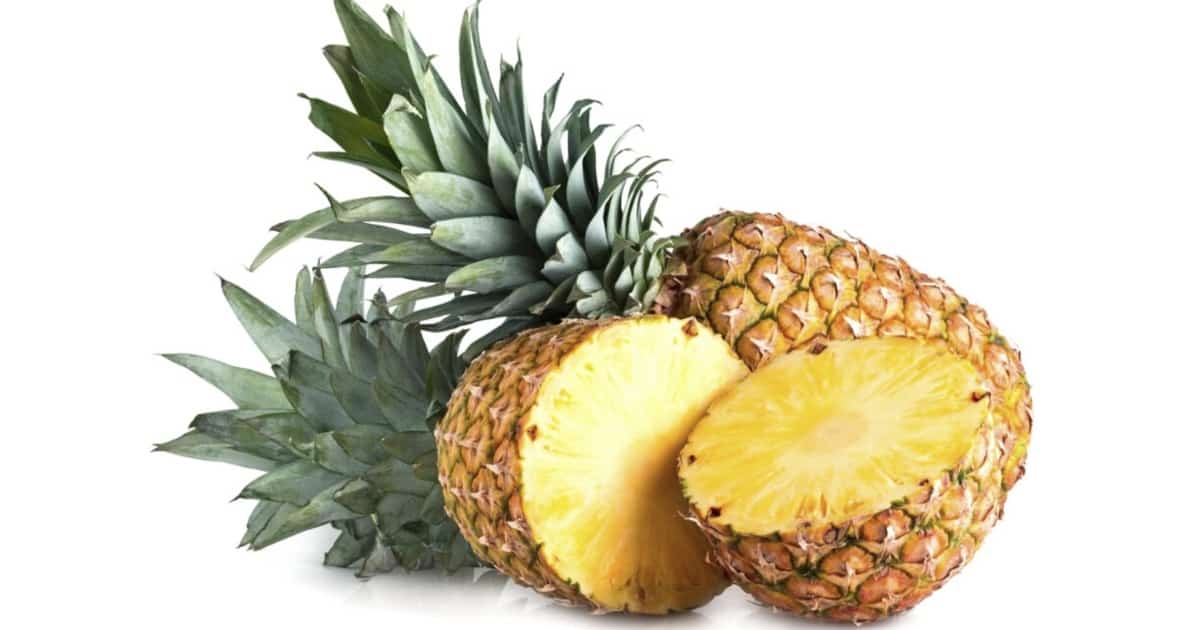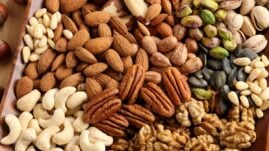This popular tropical fruit is known for its bright color, juicy mouthfeel, and tangy sweetness.
Pineapple can be prepared in countless ways—for example, it can be cut fresh from the fruit, blended into a smoothie, or grilled on a kebab.
But is pineapple a healthy choice for people with diabetes?
This article will answer some of the questions you might have about pineapple and diabetes.

Table of Contents
Why is a healthy diet so important for people with diabetes?
If you have diabetes, you know that eating a healthy diet is among the most important steps you can take to improve your blood sugar control and overall health.
Nutritionists often advise people with diabetes to include a variety of whole foods in their diets because different foods have different macro and micronutrients.
Eating a wide range of foods tends to help overall nutrition and can help improve your overall metabolic health.
Consuming more fresh produce can help to protect against cellular damage caused by free radicals, which are linked to inflammation and many chronic conditions.
They are also good sources of fiber—which most of us don’t consume enough of.
In short, good nutrition and a balanced, varied diet are among the cornerstones of living a healthy life as a person with diabetes.
What are the health benefits of pineapple?
Pineapple is relatively low in calories and very low in fat. However, it is high in vitamin C and manganese—among other important micronutrients.
Vitamin C is a powerful antioxidant that helps to support a healthy immune system.
The manganese in pineapple helps to regulate carbohydrate metabolism (and to an extent, the body’s ability to regulate blood sugar levels). It also helps the body’s uptake of calcium and other minerals.
Unprocessed pineapple is also a good source of fiber, like many other fruits. Being high in fiber, pineapple can help to improve digestive health.
Recent research studies have shown that increasing dietary fiber intake reduces the risk of colorectal cancer.
Fiber also helps you to feel full for longer after meals, which helps if you’re trying to manage your weight.
However, pineapple also contains natural sugars, including sucrose, fructose, and glucose.
Not surprisingly for how sweet it is, the majority of the calories in pineapple come from carbohydrates.
The glycemic index (GI) for raw pineapple is 66, making it a medium or medium-high-GI food.
Different preparations of pineapple have different carb counts and different glycemic index scores.
Dried pineapple is frequently coated with sugar to give it a chewy, candied texture, and has more carbohydrates and a higher glycemic index score.
The same is also true for pineapple that’s canned in heavy syrup.
The heavy syrup sometimes found with canned fruit is a mixture of water, corn syrup, and sugar—and it adds considerably to the calorie and carb counts of pineapple.
If you’re picking out pineapple, it’s best to go for as fresh and as minimally processed as possible.
This helps to maximize nutrients and avoid all the extra empty calories that can come with a packaged version of the fruit.
Is pineapple healthy for people with diabetes?
The good news is that pineapple can be a healthy addition to a diabetes-friendly diet when consumed in moderation.
Many people with diabetes will choose to limit carbohydrate counts for meals—and if your nutritionist or doctor has recommended this, it’s wise to follow their guidance.
However, the high fiber content in pineapple can help slow down the absorption of sugar in the bloodstream. This may help tone down the typical post-meal spike in blood sugar levels.
Moreover, many people do not get enough fruits and veggies in their diet, so their daily fiber and micronutrient intake may be lacking.
Additionally, the high levels of vitamin C in pineapple can boost the immune system, which is essential for people with diabetes who may be more susceptible to infections.
Pineapple also has significant amounts of manganese. Studies have shown that this micronutrient can help lower inflammation and the likelihood of developing type 2 diabetes.
Because the majority of pineapple’s macronutrients come in the form of carbohydrates, it is very important to be mindful of portion sizes.
Enjoy pineapple in moderation, and bolus appropriately if you take fast-acting mealtime insulin.
If you have diabetes, you should also try to enjoy pineapple in its natural form, rather than canned pineapple, dried or candied pineapple, or pineapple juice.
These will often contain added sugars and less fiber, which means they’ll likely have both a higher glycemic index and a higher number of net carbs.
Pineapple can be a healthy fruit choice for people with diabetes when enjoyed in moderation as part of a healthy, balanced diet.
Ask your doctor, nutritionist, or dietitian for guidance when adding new foods to your diet. They can help make sure that you’re hitting your health goals.
Does pineapple raise or lower blood sugar levels?
In the short term, eating foods with carbs—including pineapple—will not lower your blood sugar.
Consuming net carbohydrates will raise blood sugar levels.
However, consuming more dietary fiber and a range of healthy micronutrients can help improve insulin sensitivity and decrease inflammation.
For this reason, swapping high glycemic index foods and refined carbohydrates out of your diet in favor of whole foods like pineapple can help to lower average blood sugar levels over time.
But for people with diabetes, moderation in fruit intake is key.
Does pineapple raise A1C?
The HbA1c test (most commonly known as an “A1c”) measures your average blood sugar levels over a period covering roughly the previous three months.
Consuming more carbohydrates tends to nudge your blood sugar higher unless you’re also increasing exercise, insulin intake, or another factor that pulls your average blood sugar levels down.
If you suddenly add a lot of pineapple to your diet without making other changes, you might see an increase in A1c.
However, the story is more complicated and will likely vary from person to person.
Fresh pineapple contains dietary fiber which can help to improve insulin sensitivity.
Pineapple also contains the micronutrient manganese—which has been shown to regulate carbohydrate metabolism (and to a certain extent, the body’s ability to regulate blood sugar levels.)
You may see positive moves in A1c if you reduce or eliminate processed carbohydrates from your diet and instead eat a moderate amount of fresh pineapple.
In sum, pineapple doesn’t necessarily raise or lower A1c.
Everyone’s reaction will be slightly different.
That’s why it’s important to talk with a doctor, dietician, or nutritionist to get personalized guidance based on your current diet.
How many carbs are in pineapple?
1 cup of fresh pineapple (about 165 grams) has about 22 grams of carbohydrates.
It also contains about 2.3 grams of fiber.
Keep in mind that canned pineapple, dried pineapple, candied pineapple, freeze-dried pineapple, and pineapple juice all have different carb counts.
It’s a good idea to review the nutrition label before eating prepared pineapple.
Which fruits are the lowest in sugar?
In terms of sugar content and glycemic index, pineapple falls roughly in the middle when compared to other fruits.
Some fruits like dates, dried cherries, and raisins are very high in carbohydrates and have a very high glycemic index.
For example, 165 grams of Medjool dates contain about 124 grams of carbs.
However, other fruits are relatively low in sugar.
Raspberries, raw cranberries, blackberries, and blueberries are among the fruits with the lowest sugar content.
A cup of fresh raspberries, for example, has only 14.6 grams of carbs with over 8 grams of fiber.



